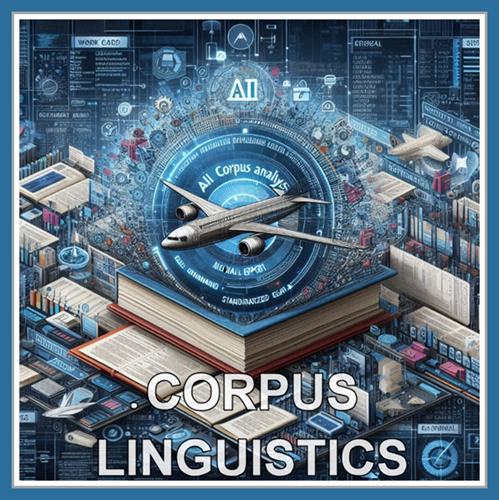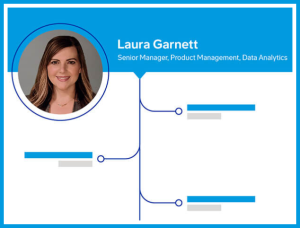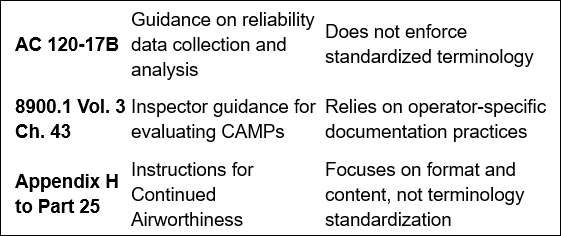AI’s Corpus Linguistics can clean up the MX records MESS, yes?

Three highly respected authorities on digital tech ops (Ms. Garnett, Boeing; Mr. Jacobs, Zymbly; Mr. Stoevesand, Lufthansa Technic; and Mr. Baker, Trax) have expressed opinions about the use of AI to enhance the value of Maintenance Records. All agree that this field has great potential to enhance safety, BUT
- Garnett and Jacobs believe generative application of large-language models can provide IMMEDIATE results.
- Stoevesand asserts that the current mess in MX records must be standardized first through industry cooperation and then run the “library” through AI.
- Baker expressed agreement with both in part- AI can help with the lack of an MX lexicon but agrees with Lufthansa’s concerns about the historically poor consistency in the words used for reports.
The FAA has long struggled with inconsistent terminology in maintenance reporting, especially within Continuous Airworthiness Maintenance Programs (CAMP), leading to data fragmentation, misinterpretation, and regulatory inefficiencies.
Here are significant instances where these variations have impacted aviation[1]:
Fragmented Reporting Across Operators
-
-
- Air carriers and repair stations often used varied language to describe identical issues (e.g., “HYDRAULIC LEAK” VS. “FLUID SEEPAGE”), complicating FAA oversight and trend analysis.
- Lack of uniformity in problem descriptions hindered the FAA’s ability to aggregate and analyze reliability data across fleets.
-
Legacy Systems and Manual Entry
-
-
- The FAA’s Program Tracking and Reporting Subsystem (PTRS) and Air Transportation Oversight System (ATOS) relied heavily on manual inputs, which amplified inconsistencies in terminology.
- Inspectors and operators lacked a centralized lexicon, resulting in divergent interpretations of maintenance findings.
-
-
-
- Continuous Airworthiness Maintenance Program (CAMP) Complexity
-
-
-
- CAMPs under 14 CFR Parts 121 and 135 required operators to document and evaluate maintenance issues continuously, but no standardized taxonomy was enforced for problem entries.
- Advisory Circulars like AC 120-17B offered guidance on reliability programs but did not mandate consistent terminology across carriers.
-
THE ? AN? ANSWER within the AI’s systems▬▬► CORPUS LINGUISTICS, a powerful tool has the capacity to analyze aviation maintenance documents, scrutinize the language used in technical documents, and improve communication safety through standardized language like Simplified Technical English (STE). These studies[2] use large, specific corpora of maintenance manuals to understand linguistic patterns, create better training materials, and develop clearer documentation for the global workforce.
The specific tools to create a reliable standard vocabulary and data entry might include:
- Authentic Material Development: A corpus (a large, structured collection of texts and speech) of aircraft maintenance manuals, technical reports, and communications provides authentic language data. This allows instructors to create training materials that reflect actual workplace language, rather than generic English.
- Vocabulary and Grammar Focus: Analysis of a specialized corpus can identify high-frequency technical vocabulary, specific grammatical structures, and common phrasing (collocations) used in maintenance contexts. This allows for a focused curriculum that targets the most relevant language skills.
- Standardization of Terminology: Corpus analysis can help in the development of standardized and clear language, such as Simplified Technical English (STE), which is crucial for clarity and safety in global maintenance operations. It helps in designing glossaries and even multilingual visual dictionaries.
- Identifying Communication Pitfalls: By analyzing a corpus of communication errors or accident reports, researchers can identify common misunderstandings related to language, such as accent, rate of speech, or specific phraseology, allowing for targeted training to mitigate these risks.
- Data-Driven Learning (DDL):Instructors can use corpus tools directly in the classroom, allowing trainees to explore language patterns themselves.
In essence, corpus linguistics offers a SYSTEMATIC, EVIDENCE-BASED APPROACH to ensure that aviation maintenance personnel have the precise linguistic skills necessary for effective and safe task performance.
Generative AI Confronts ‘Messy’ MRO Data
Credit: Chainarong Prasertthai / Getty Images
Alex Derber October 15, 2025
LONDON—The MRO sector has suffered from years of under-investment in technology, but generative artificial intelligence (AI) can help bridge the gap to advances in the cockpit and on the operational side, according to a panel at the MRO Europe 2025 conference in London.
 “MRO is less close to the core mission of flying customers or flying cargo [so] … it’s often a secondary thought in terms of investment,” says Laura Garnett, Boeing Global Services’ executive director digital tech ops and digital aviation solutions. “Now we have opportunities to leverage things like generative AI to bridge the gap across legacy systems to connect data in ways we haven’t before, to really reduce the friction in bringing datasets together, which then allow us to build insights on top.”
“MRO is less close to the core mission of flying customers or flying cargo [so] … it’s often a secondary thought in terms of investment,” says Laura Garnett, Boeing Global Services’ executive director digital tech ops and digital aviation solutions. “Now we have opportunities to leverage things like generative AI to bridge the gap across legacy systems to connect data in ways we haven’t before, to really reduce the friction in bringing datasets together, which then allow us to build insights on top.”
While AI has been used in MRO for many years, notably with machine learning for predictive maintenance, developments in large-language models (LLMs) will allow the sector to work with more unstructured information and hand off certain tasks to AI, says Ben Jacob, CEO of Zymbly, a startup developing AI tools for maintenance.
However, THESE DEVELOPMENTS WILL ONLY BE POSSIBLE IF THE INDUSTRY RECTIFIES ITS DATA QUALITY ISSUES, points out JAN STOEVESAND, senior director digital solutions data and analytics at Lufthansa Technik.
Lufthansa Technik.
“Data in our industry is a mess,” Stoevesand says. “Gen AI heavily depends on good data quality—we need to solve this jointly, we NEED TO COOPERATE BETTER ACROSS the industry to make the data ready, to build a solid foundation, and then we can put all these magical things on top.”
Stoevesand adds that parts documentation and traceability are obvious candidates for improvement.
Garnett views the issue slightly differently, arguing that there is already a role for generative AI to create better quality data and jump-start what she sees as MRO’s antiquated data collection infrastructure.
“It’s not that we’ve got to go fix the data and then move to AI,” she says. “We’ve had success applying LLM-based classifiers, for example, to things like logbook data. So much of the data has human variability in it that gen AI is really well built and suited for. So, we can apply AI to improve the data to then apply AI, on top of it, to get the outcomes that we need.”
Jon Baker, VP intelligent procurement solutions at MRO software develop Trax, agrees with both Stoevesand and Garnett.
“Gen AI can actually HELP us with some of this UNSTRUCTURED DATA, but it’s also correct that DATA QUALITY is an ongoing concern and SHOULD BE A FOCUS AREA,” Baker says. “You can talk about any aspect of AI that you want to, but you will not get very far if your foundation is not very strong.”
Alex Derber, a UK-based aviation journalist, is editor of the Engine Yearbook and a contributor to Aviation Week and Inside MRO.
[2] https://ira.lib.polyu.edu.hk/handle/10397/115419?mode=simple; https://www.sciencedirect.com/science/article/pii/S0889490625000183; https://www.scirp.org/pdf/ojapps_2021102515023018.pdf; [5] https://www.researchgate.net/publication/361413623_Identifying_Aircraft_Maintenance_Trainees’_English_Language_Learning_Needs; https://ira.lib.polyu.edu.hk/bitstream/10397/113064/1/1-s2.0-S0889490625000183-main.pdf; https://open.mgimo.ru/bitstream/123456789/3096/1/magiainno_2021_64.pdf




